You are using an out of date browser. It may not display this or other websites correctly.
You should upgrade or use an alternative browser.
You should upgrade or use an alternative browser.
Best method or system for leveling a scope???
- Thread starter WildCats
- Start date
 Help Support Long Range Hunting Forum
Help Support Long Range Hunting Forum
fj40mojo
Well-Known Member
My method for mounting a scope and aligning the reticle is as follows. First I assume that the bottom of the action is perpendicular to the bore. That being said I remove the barreled action from the stock and place it on a level surface with the action supported on a pair of precision ground 1-2-3 blocks and I use a machinist jack set to support the muzzle end of the assembly. With the scope loose in the rings and as close as possible to the location I want it to be for proper eye relief I can rotate the scope within the rings and use a machinist set up square indexed of the same level surface as a vertical reference line. Line the vertical crosshair up with the vertical edge of the square and you are plumb. I've tried putting spirit bubbles on the tops of the reticle caps and on the reticle itself and it's never worked out, at least not to the level of precision that I'm after. I prefer to use machined surfaces to reference off of when trying to maintain parallelism and perpendicularity. All these tools can be purchased from MSC or Enco for less than what you 'd spend on most of the scope leveling gadgets that are on the market.
My ideology here is that the goal is to align the reticle vertically with the bore. I find a machined surface somewhere on the bottom of the action (whether that is the recoil lug or the actual bottom of the action) and use a precision ground block to support the action. This means that my action is now in a parallel attitude with my reference surface. Then I'm using a precision ground tool (square) to establish a vertical line from the same reference surface that I then align the vertical crosshair with. Everything is referenced off of the same surface and a machined surface of the action. It works for me, and as a machinist it makes sense to me to use the same techniques an inspector would use. If I had a 100yard long granite surface plate I would use that, but to my knowlege no one has one of those. It's not as complicated as it sounds and the tools are inexpensive and accurate.
My ideology here is that the goal is to align the reticle vertically with the bore. I find a machined surface somewhere on the bottom of the action (whether that is the recoil lug or the actual bottom of the action) and use a precision ground block to support the action. This means that my action is now in a parallel attitude with my reference surface. Then I'm using a precision ground tool (square) to establish a vertical line from the same reference surface that I then align the vertical crosshair with. Everything is referenced off of the same surface and a machined surface of the action. It works for me, and as a machinist it makes sense to me to use the same techniques an inspector would use. If I had a 100yard long granite surface plate I would use that, but to my knowlege no one has one of those. It's not as complicated as it sounds and the tools are inexpensive and accurate.
Before going to the range, I lay my rifle with scope loosely mounted in my cleaning cradle. I eye
ball line up the field of view and get the reticule as square as is then possible. Tighten the ring screws down so that the scope can barely be rotated. Get two small bubble levels, place one on top of the elevation cap. The other I glue to a popsickle stick, and hold it under the stock. This is easy with a flat fore end. On a round fore end, I try to bridge it across the loading port.
Now, find a carpenters square, a 4' cord and tie a weight (I use a large washer) to the string. You might also need a 6" clamp and a small piece of wood, about 1"x2"x15". Head to the range and attach the clamp and piece of wood to the end of a 50 yd. target backer. Tie the plumb line to the wood. Sit rifle and scope in a solid rest at the bench. Use the carpenter's square from 12 to 6 o'clock on the recoil pad to get the rifle situated level. Line the reticule up with the verticle string. Rotate scope in direction for the verticle reticule to match the string. Tighten ring screws, re-check, and shoot at 50 yds., then 100 yds.
To verify, shoot a box at 100 yds. If your scope has 1/4th min. adjustments, fire first shot at one corner of a 1" square, move the adjustment right 4 clicks, shoot again, then down 4 clicks, fire another round, then left 4 clicks, take another shot, and finally, again fire at the first corner. If you have done your job correctly, the first and fifth shots should be one hole.
ball line up the field of view and get the reticule as square as is then possible. Tighten the ring screws down so that the scope can barely be rotated. Get two small bubble levels, place one on top of the elevation cap. The other I glue to a popsickle stick, and hold it under the stock. This is easy with a flat fore end. On a round fore end, I try to bridge it across the loading port.
Now, find a carpenters square, a 4' cord and tie a weight (I use a large washer) to the string. You might also need a 6" clamp and a small piece of wood, about 1"x2"x15". Head to the range and attach the clamp and piece of wood to the end of a 50 yd. target backer. Tie the plumb line to the wood. Sit rifle and scope in a solid rest at the bench. Use the carpenter's square from 12 to 6 o'clock on the recoil pad to get the rifle situated level. Line the reticule up with the verticle string. Rotate scope in direction for the verticle reticule to match the string. Tighten ring screws, re-check, and shoot at 50 yds., then 100 yds.
To verify, shoot a box at 100 yds. If your scope has 1/4th min. adjustments, fire first shot at one corner of a 1" square, move the adjustment right 4 clicks, shoot again, then down 4 clicks, fire another round, then left 4 clicks, take another shot, and finally, again fire at the first corner. If you have done your job correctly, the first and fifth shots should be one hole.
bigngreen
Well-Known Member
I lock the rifle down in a vise and level it with a level on the tang and sight it at a 100yrds. I have a vertical line set up at a 100yrds on cardboard and I line it up and lock it down lightly, then I dial it all the way up and down and adjust if necessary so that the turret moves perfectly to the line. Lock it down and shoot it to zero on the line then dial up to the top and shoot again to verify the turret is tracking correctly.
The way I do it is like this. I attach a B-square level to my Picatinney rail under the scope. I figure that I will use the B-square level to keep the rifle level when I shoot. Then I put the scope in the rings at the correct eye distance for me. I tighten up the rings just enough so the scope can be rotated. I am able to put my bench rest on my outdoor table on my deck. Then I line the vertical cross hair on the edge of my neighbors house that is 100 yds away while keeping the B-square level. I have put a 6' carpenter level on the house and it is perfectly plumb. When I run the turret all the way up and down I know that it is as close to plumb that I'm going to get it.
This is how I know it is plumb to my action or rail.
"Aim small miss small",
joseph
This is how I know it is plumb to my action or rail.
"Aim small miss small",
joseph
Last edited:
woods
Well-Known Member
I use an EXD
EXD ENGINEERING : EXD ENGINEERING VERTICAL RETICLE INSTRUMENT - World's Largest Supplier of Firearm Accessories, Gun Parts and Gunsmithing Tools
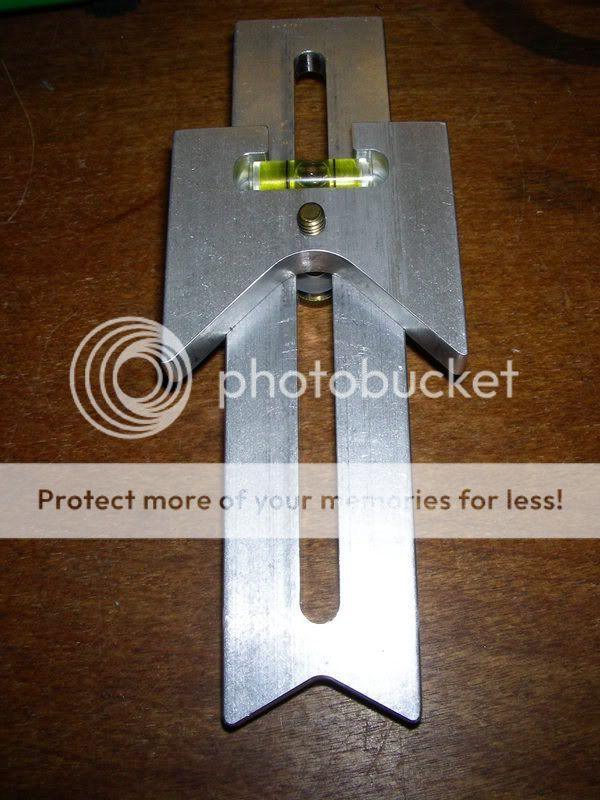
which is well made and level when compared to a larger level
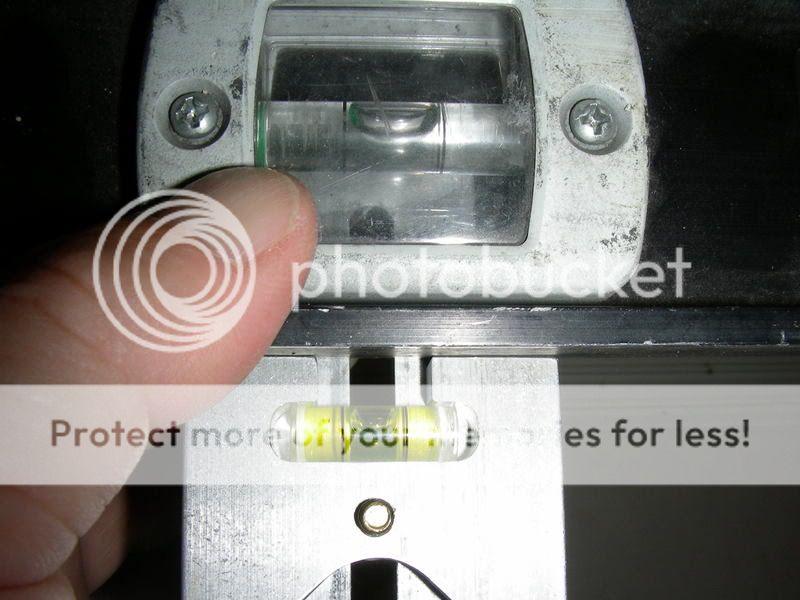
set the rifle in a vise on the bench aimed out the door and place the EXD on the scope barrel and barrel
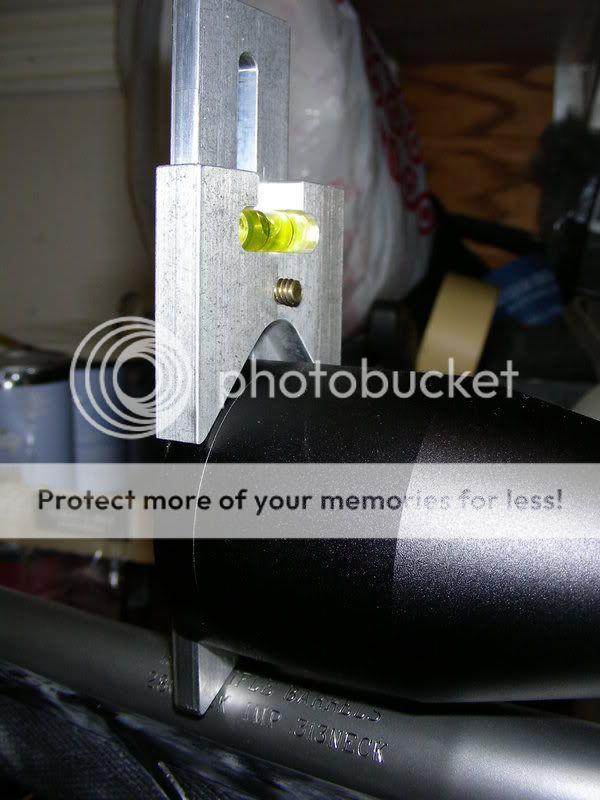
rotate the rifle in the padded vise until the EXD shows level and lock it in. Aimed out the door to a 4' level on a fence 30 yards out, now rotate the scope until the reticle is level with the 4' level. When the EXD is level and the reticle is level the trick is to lock the scope rings in and keep it that way. This takes all the cant out of the rifle
Vertical Retical Instrument
The trick is to duplicate this when at the bench or in the field and I like to get a ScopLevel
Scoplevel Anti Cant Leveling Device
which folds down when not in use
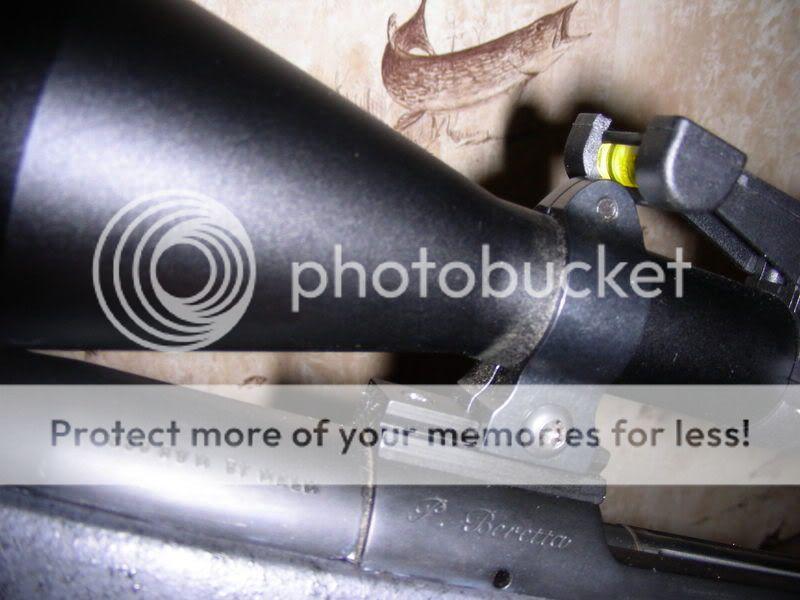
EXD ENGINEERING : EXD ENGINEERING VERTICAL RETICLE INSTRUMENT - World's Largest Supplier of Firearm Accessories, Gun Parts and Gunsmithing Tools

which is well made and level when compared to a larger level

set the rifle in a vise on the bench aimed out the door and place the EXD on the scope barrel and barrel

rotate the rifle in the padded vise until the EXD shows level and lock it in. Aimed out the door to a 4' level on a fence 30 yards out, now rotate the scope until the reticle is level with the 4' level. When the EXD is level and the reticle is level the trick is to lock the scope rings in and keep it that way. This takes all the cant out of the rifle
Vertical Retical Instrument
The trick is to duplicate this when at the bench or in the field and I like to get a ScopLevel
Scoplevel Anti Cant Leveling Device
which folds down when not in use

Niles Coyote
Well-Known Member
If you are using a one piece base use the feeler gauge method. Align the flats of the gauge with the flat of the turret housing and base and your turrets will then be true for dialing in your drop.
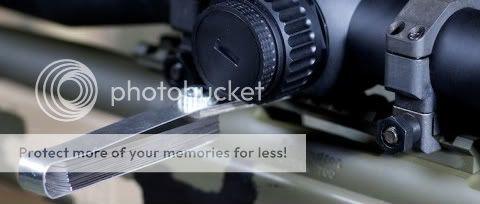

justgoto
Well-Known Member
I open my box magazine and use a "L" shaped square to square the turret cap to the box mag lip.
To test I'll draw a plumb line on a target about 2 feet or more. Set that at 100 yards, shoot the bottom of the line, adjust up 2 feet or so, shoot at the same spot and examine the positioning of both shots to the line.
To test I'll draw a plumb line on a target about 2 feet or more. Set that at 100 yards, shoot the bottom of the line, adjust up 2 feet or so, shoot at the same spot and examine the positioning of both shots to the line.
Last edited:
coues7
Well-Known Member
Great topic. I have used the feeler gauge method on all my stuff. I mounted a friends scope and tried to use the same method except he had a bushnell elite 3200 and the bottom of his scope doesn't seem to have the big wide base my NF has......kind of presented an issue.
I use a method similar to BigNGreen. The main focus being on the TRAVEL of the scope and not the reticle. No matter how precise or perfect you get your reticle plumb with the earth, if your sope does not track in the EXACT same plane as the reticle, you will be off left/right at long range. For those of you who use the reticle for holdover, then the reticle should be your primary focus. If you dial for yardage, you need the tracking of your scope to be your main focus. I don't have the luxury of owning a nightforce, or other high end optics. I do know the two Leupold VX3's I have, suffer from some reticle cant in relation to the travel of the scope.
So here is what I do.
I install an anti-cant device on all my long range setups. Although they are cheaply built, I prefer the tall flip-up style as in the 4th picture posted by Woods. I use my cleaning vise, and make sure the gun is very stable and won't move while dialing the scope up and down. At 100 yards, I draw a 4' line on paper, and use a 4' level to make sure it is perfectly level. Then I dial my scope to the top of its travel and line up with the top of the line. (don't forget to adjust the paralax to take out any optical error). With the crosshairs verticly eyeballed on the line, I install the anti-cant device so that the level reads perfect and snug it down. Now dial to the bottom of the scope travel and see which side the center of the crosshair ends up on. If it ends up on the right side of the line, loosen the anti-cant device and rotate counter clockwise (from the shooters position) slightly. If it ends up on the left, rotate clockwise. Then redial back to the top, setup again, and retest. It will most likely take a few times to get it absolutely perfect.
Now your anti-cant device is setup exactly in line with the travel of the scope. The anticant device is now a permanet fixture for this scope, and should never be removed or adjusted or you will have to repeat the process. At this point, I adjust the scope/reticle from a prone shooting position off bipods. I line up on a target, find a comfortable hold with good cheekweld, and look to see if the anticant device is level. I repeat several times and adjust the scope in the rings slightly so that in my natural hold, the anticant device ends up reading level. Then I lock down the rings, and I am done.
I will probably get a lot of people that disagree with me on the next point. It really does not matter if the SCOPE is level or inline with the bore at all. As long as you use the anti-cant device when you shoot, your bullet will travel with gravity, and in line with the travel of your scope. Example: Lets say after setting up your anti-cant device and your scope travels perfectly up and down with gravity. Lets pretend to loosen the rings and twist the scope something severe like 15 degrees clockwise. Now the gun would need to be rotated counter closkwise 15 degrees for the anti-cant device to read level. Thus the centerline of the bore is to the right of the scope ( I will guess about a 1/4"). So if you zero your gun at 200 yards, at the muzzle your bullet impact would be 1/4" to the right. Then at 400 yards you will be 1/4" to the left. At 1000yrds you would be off about 1". Keep in mind this would be very drastic cant and all of us will do a much better job of eyeballing the scope to within a few degrees of being directly above the centerline of the bore.
The tool used by woods is awesome for setting the scope directly above the centerline of the bore. I might have to make one!
This is how I learned to do it after wasting a lot of time getting reticles perfectly level and later finding out my scope did not track in line with the reticle. I hope this might help some of you.
aroshtr
So here is what I do.
I install an anti-cant device on all my long range setups. Although they are cheaply built, I prefer the tall flip-up style as in the 4th picture posted by Woods. I use my cleaning vise, and make sure the gun is very stable and won't move while dialing the scope up and down. At 100 yards, I draw a 4' line on paper, and use a 4' level to make sure it is perfectly level. Then I dial my scope to the top of its travel and line up with the top of the line. (don't forget to adjust the paralax to take out any optical error). With the crosshairs verticly eyeballed on the line, I install the anti-cant device so that the level reads perfect and snug it down. Now dial to the bottom of the scope travel and see which side the center of the crosshair ends up on. If it ends up on the right side of the line, loosen the anti-cant device and rotate counter clockwise (from the shooters position) slightly. If it ends up on the left, rotate clockwise. Then redial back to the top, setup again, and retest. It will most likely take a few times to get it absolutely perfect.
Now your anti-cant device is setup exactly in line with the travel of the scope. The anticant device is now a permanet fixture for this scope, and should never be removed or adjusted or you will have to repeat the process. At this point, I adjust the scope/reticle from a prone shooting position off bipods. I line up on a target, find a comfortable hold with good cheekweld, and look to see if the anticant device is level. I repeat several times and adjust the scope in the rings slightly so that in my natural hold, the anticant device ends up reading level. Then I lock down the rings, and I am done.
I will probably get a lot of people that disagree with me on the next point. It really does not matter if the SCOPE is level or inline with the bore at all. As long as you use the anti-cant device when you shoot, your bullet will travel with gravity, and in line with the travel of your scope. Example: Lets say after setting up your anti-cant device and your scope travels perfectly up and down with gravity. Lets pretend to loosen the rings and twist the scope something severe like 15 degrees clockwise. Now the gun would need to be rotated counter closkwise 15 degrees for the anti-cant device to read level. Thus the centerline of the bore is to the right of the scope ( I will guess about a 1/4"). So if you zero your gun at 200 yards, at the muzzle your bullet impact would be 1/4" to the right. Then at 400 yards you will be 1/4" to the left. At 1000yrds you would be off about 1". Keep in mind this would be very drastic cant and all of us will do a much better job of eyeballing the scope to within a few degrees of being directly above the centerline of the bore.
The tool used by woods is awesome for setting the scope directly above the centerline of the bore. I might have to make one!
This is how I learned to do it after wasting a lot of time getting reticles perfectly level and later finding out my scope did not track in line with the reticle. I hope this might help some of you.
aroshtr